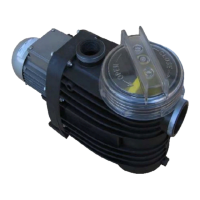8
4 Automatic Control For Full-Tank Shutoff
We recommend the use of a float switch or
other means to prevent overflow of your tank.
This will stop the pump when the tank is full,
then reset when the level drops. This con-
serves ground water, prevents overflow, and
eliminates unnecessary pump wear. PS-XXX
controllers allow the use of small signal cable
to a remote float switch, even if the tank is a
long distance away.
Float switch requirements
1. A switch must be used, not wet electrodes.
2. The preferred system requires a float
switch to MAKE contact on rise to turn the
pump OFF. This is called “normally open”
(N.O.). It may be commercially labeled as a
“pump down” switch, but here it works in
reverse, to allow pumping up.
sealed
cable clamp
cable
weight
pump off
pump on
pumping
range
Wiring to the controller
The controller offers two
options for connection of a
remote switch. These allow
the use of either a
“normally open” (N.O.) or
a “normally closed” (N.C.)
switch. “Normal” refers to
the status of the contacts
when the switch is DOWN
and calling for water.
Float switch cable require-
ments
1. Two wires are needed.
2. Minimum wire size #18
AWG ( 1mm²). This is good
for a distance as far as 2000
feet (600 m).
3. The cable must be suitable
for its environment.
4. If it must run a long
distance, use twisted-pair
shielded cable to reduce the
chance of damage from lightning-induced
surge.
Grounding shielded float switch cable If
you use shielded cable, connect the shield to
ground AT THE CONTROLLER ONLY. DO
NOT ground the shield at the float switch.
This will reduce surges induced by nearby
lightning.
Wiring a “normally open switch” Connect the switch to terminals 3 and 4 (NO and
common) and connect terminals 4 and 5 together, as illustrated.
Closing (connecting) the switch circuit turns the pump OFF
Wiring a “normally closed/reverse action switch” Connect the switch to termins 4
and 5. Closing (connecting) the switch turns the pump ON
Manual PS600 BADU Top 12

